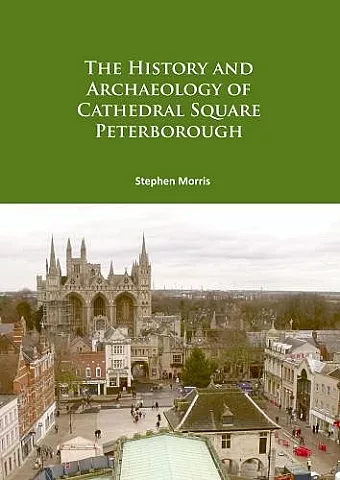The History and Archaeology of Cathedral Square Peterborough
Format:Paperback
Publisher:Archaeopress
Published:31st Aug '17
Currently unavailable, and unfortunately no date known when it will be back

Northamptonshire Archaeology, now MOLA Northampton, was commissioned by Opportunity Peterborough (Peterborough City Council) to undertake archaeological work ahead of an improvement scheme centred on Cathedral Square, the historic centre of Peterborough. The construction of two triangular arrays of fountains in the central part of Cathedral Square formed the core of the archaeological investigation, which was undertaken from November 2008 to August 2011. The archaeological work identified a succession of stone surfaces from the creation of the market square in the 12th century through to the 19th century. The cobbled surface of the original market square was overlaid by an accumulation of dark organic silts, containing finds dating through to the 16th century. At the start of the 15th century the parish church of St John the Baptist was constructed over the western half of the medieval market square with a cemetery immediately to the west of the church. Following the closure of this cemetery by the later 16th century, a small area of floor surfaces were the probable remains of a building, perhaps the Sexton’s house, at the north end of Butchers Row. On the south side of the market square there were the remains of a rectangular stone building, dated to the late 15th to 17th centuries, perhaps containing shops. Between this building and the church, a raised area of rubble was probably a remnant of the plinth for the recorded market cross. The late 17th century saw the construction of the still extant Guildhall to the east of the church. The raising of the ground level and resurfacing of the square was probably contemporary with the Guildhall. This would have involved the removal of all existing buildings on the south side of the square, as well as the removal of the market cross. In the late 18th or early 19th centuries the square was again raised and resurfaced, now with pitched limestone. Shallow gutters between the pavement and the road facilitated drainage. A surface of granite sets of the 19th-century survived in a few places below the late 20th-century slab pavement, which has now been replaced by the fountain development.
ISBN: 9781784916619
Dimensions: 290mm x 205mm x 4mm
Weight: 390g
102 pages